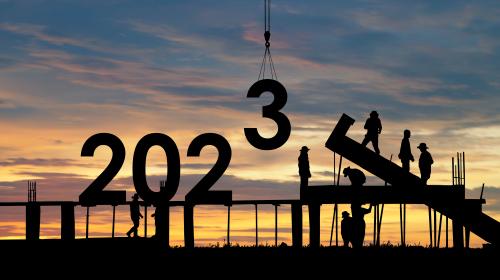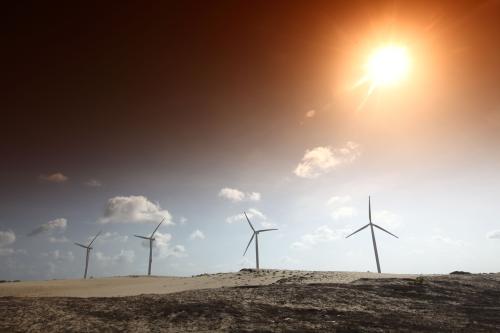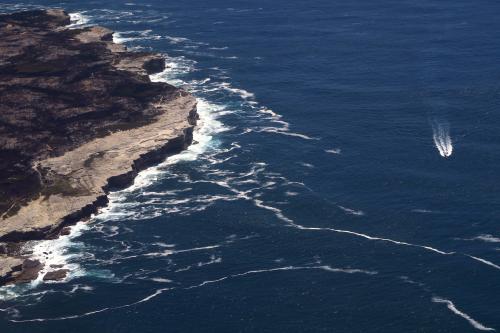Small states—countries with a population of 1.5 million or less—were hit particularly hard by the COVID-19 pandemic. They’ve also had a much slower recovery than other emerging market and developing economies (EMDEs). Small states have several features that make them especially vulnerable to global economic and climate-related developments. To make matters more difficult, these countries have fewer policy tools at their disposal than larger countries.
A deep contraction during the pandemic, and a prolonged recovery
Small states are forecast to grow 3.5 percent in 2023, slowing from an estimated 5.2 percent in 2022. At the projected pace of growth, small states will regain their aggregate 2019 level of activity only this year, while other EMDEs exceeded this threshold in 2021 (Figure 1). Small states face long-term economic damage related to the shocks of the previous three years, including skills and education losses, a lower capital stock, and damage from the protracted downturn of tourism.
Figure 1. GDP compared to pre-pandemic levels
Source: World Bank.
Note: Sample includes 34 EMDE small states (excluding Guyana), 115 EMDEs excluding small states, and 37 advanced economies.
The costs of the pandemic were much more severe for small states than other EMDEs. Economic activity shrank more than 11 percent in 2020, compared with 1.5 percent in other EMDEs. The depth of the contraction in small states was largely due to the collapse of global travel, which disproportionately affected the three-fifths of small states that are highly reliant on tourism. The contraction in tourism during the pandemic was truly unprecedented: During the four global recessions prior to 2020, the largest annual decline in global tourist arrivals was about 4 percent in 2009, while in 2020, arrivals fell by more than 70 percent (Figure 2).
Figure 2. Tourism arrivals during global recessions
Source: Haver Analytics; national statistical agencies.
Note: Lines show one year before (t-1) to four years after (t+4) the year of the recession, except where data are not yet available for the 2020 recession.
High vulnerability to external shocks
Small states share attributes that make them all vulnerable to external shocks and contribute to greater growth volatility. For example, food and fuel imports are equivalent to about one-sixth of GDP in small states, substantially more than in other EMDEs (Figure 3). Steep rises in food prices brought on by war-related disruptions to grain, energy, and fertilizer markets in 2022 have squeezed living standards, increased inflation, and worsened terms of trade.
Figure 3. Food and fuel imports
Source: U.N. Comtrade; World Bank; World Development Indicators.
Note: Bars show simple averages of 2019 data. Food imports sample includes 22 EMDE small states and 95 EMDEs excluding small states. Fuel imports sample includes 18 EMDE small states and 78 EMDEs excluding small states. Energy exporting EMDEs were dropped from the fuel imports sample.
Small states face large and growing risks from climate change. The frequency of weather-related natural disasters in these countries has increased in recent decades, and small states face severe—in some cases even existential—threats from rising sea levels and coastal erosion. Small states suffer disaster-related damages and losses of close to 5 percent of GDP per year, about 15 times the amount in other EMDEs (Figure 4). In extreme cases, damages from a single disaster can be several multiples of the country’s GDP. Estimated damages and losses from Hurricane Maria in 2017 in Dominica and Hurricane Ivan in Grenada in 2004, for example, amounted to more than 200 percent of GDP.
Figure 4. Damages and losses from natural disasters, 1990-2021
Source: EM-DAT; World Bank; World Development Indicators.
Note: Bars show the sum of damages in each group of countries in each year divided by the sum ofnominal GDP in each group of countries, weighted by country-level nominal GDP. Disasters include storms, floods, droughts, earthquakes, landslides, and volcanic activity.
Limited government capacity means more international support is necessary
In addition to their vulnerability to the effects of climate change, small states tend to have limited government capacity, be highly indebted, and rely heavily on external financing (Figure 5). Small states in East Asia and Pacific and Sub-Saharan Africa tend to have weak digital connectivity, and many small states in the Pacific are geographically distant from other economies. Accelerating growth while building resilience to future shocks will require extensive domestic efforts, but these are unlikely to be sufficient without support from the global community.
With international assistance, small states can diversify their economies more, improve digital connectivity, enhance disaster risk management, lessen dependence on imported fossil fuels. There are also benefits to be derived from reducing trade costs and collaborating with each other and with major trading partners to achieve economies of scale (Figure 6). These measures can improve short-term stability and, just as importantly, long-term growth.
Figure 5. Government debt
Source: International Monetary Fund; World Bank.
Note: Sample includes 36 EMDE small states and 113 EMDEs excluding small states.
Figure 6. Trade connectivity and costs
Source: World Bank; World Development Indicators.
Note: Simple averages of countries in each group. Liner shipping connectivity is an index based on number of ships, their container-carrying capacity, maximum vessel size, number of services, and number of companies that deploy container ships in a country’s ports; data for 2020. Tariff rate is the weighted mean import tariff on all products. Data for 2018.
The Brookings Institution is committed to quality, independence, and impact.
We are supported by a diverse array of funders. In line with our values and policies, each Brookings publication represents the sole views of its author(s).














Commentary
Small states are the canary in the coal mine for the global economy, and they are struggling
January 26, 2023